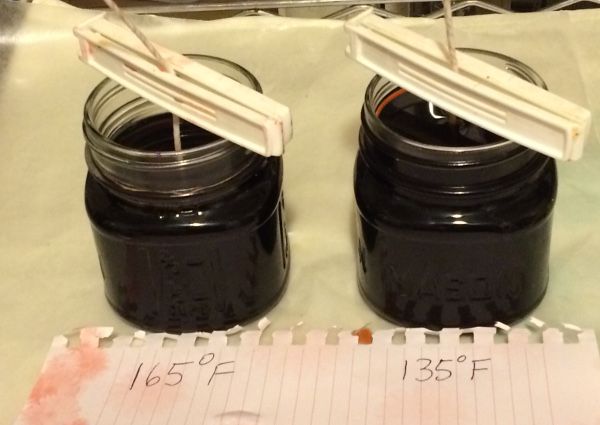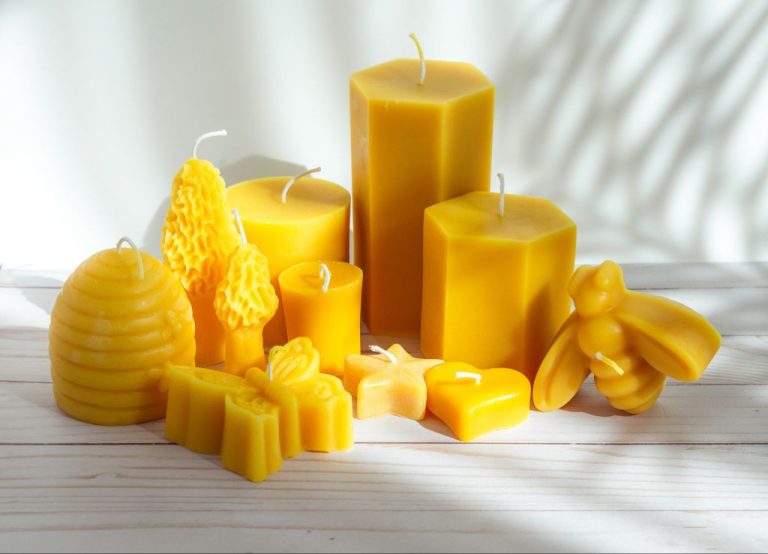What Are The Pros And Cons Of Soy Candles?
Soy candles are candles made from soy wax, a processed form of soybean oil. Soy wax is made from hydrogenated soybean oil. The hydrogenation process helps soy wax burn slower and cooler than other types of waxes used in candle making (such as paraffin wax). Soy candles are usually container candles because the wax can become soft in higher temperatures.
Soy candles have become increasingly popular over the last few decades as a natural and renewable alternative to paraffin wax candles. Some key pros of using soy wax instead of paraffin wax include being made from a renewable resource, having a lower melting point, and being cleaner burning. However, soy candles also have some drawbacks, like potentially having a lower fragrance throw and being more prone to frosting.
This section provides an overview of what soy candles are and highlights some of the key pros and cons that will be discussed in more depth throughout the article. The sources used for the background information were the Wikipedia page on soy candles and an article from Zuzu Candle Co. on the history of soy candles.
Pros of Soy Candles
Some of the main benefits of soy candles include:
Made from a renewable resource – Soy wax is made from soybeans, which are a renewable and sustainable crop. Soybeans can be replanted after harvest, making soy wax a renewable resource 1.
Biodegradable – Soy wax is biodegradable, meaning it will break down naturally over time without causing harm to the environment. Paraffin wax, on the other hand, is not biodegradable 2.
Non-toxic – Soy wax contains no toxins, meaning soy candles burn clean. Paraffin wax releases carcinogens and toxins when burned 1.
Long burning – Soy wax has a lower melting point than paraffin wax, so soy candles tend to burn slower and longer. A soy candle’s burn time is around 50% longer than a paraffin candle 3.
Eco-friendly – Since soy wax is made from a renewable crop and is biodegradable, it is considered a more eco-friendly option than paraffin wax.
Cons of Soy Candles
While soy candles have many benefits, there are some downsides to consider as well:
Soy wax is generally more expensive than paraffin wax. The raw materials and production process for soy wax costs more, so soy candles tend to be priced higher than paraffin candles (Joetie 2021).
Soy wax may not throw scent as strongly as paraffin. The natural properties of soy wax can make it more difficult for fragrances to fill a room compared to paraffin candles. Soy wax absorbs fragrances well, but does not allow scents to travel through the air as readily (Everything Dawn 2015).
Soy candles can develop frosting on the surface as they burn. The soy wax can crystallize and create a white frost-like appearance. This does not impact performance, but some people find it visually unappealing (Happy Flame).
Soy Wax vs. Paraffin Wax
When comparing soy wax to paraffin wax, there are some key differences in properties, emissions, and safety to consider.

Soy wax has a lower melting point than paraffin, needing less heat to liquify. It also solidifies faster after being poured (1). Soy wax is denser and burns slower and cooler than paraffin. This results in soy candles having a longer burn time, but requiring more frequent trimming of the wick (1).
In terms of emissions, soy wax produces very little soot compared to paraffin, which produces heavy soot emissions. Paraffin wax releases carcinogenic compounds like toluene and benzene when burned, whereas natural soy wax does not (2). Soy wax is also made from a renewable resource.
From a safety standpoint, soy wax is non-toxic and biodegradable. Paraffin wax is derived from petroleum, a non-renewable resource. If a soy candle is tipped over, the wax is not hot enough to cause skin burns or ignite surfaces. Paraffin wax can reach higher temperatures and poses more risk if spilled (2).
Overall, soy wax burns cleaner, cooler, and slower than paraffin. It’s a more sustainable and less hazardous option for candle making.
(1) https://lonestarcandlesupply.com/soy-vs-paraffin/
Soy Candle Fragrance
Scent throw refers to how well a candle’s fragrance oils are dispersed into the surrounding air when burned. With soy wax, achieving a strong scent throw can be more challenging than paraffin wax due to the lower melting point. However, there are ways to boost soy candle fragrance.
According to CandleScience.com, using higher concentrations of fragrance oils, between 10-12% by weight, can significantly improve hot throw in soy candles (source). Testing different scent load percentages to find the ideal for each fragrance oil is key. Some also recommend using wider container diameters to allow more melted wax to pool and release fragrance.
Selecting the right fragrance oils makes a difference as well. Opt for those designed for soy wax, with a high flashpoint and lower boiling point. Some popular picks are fruity, bakery, and gourmand scents. Avoid complex perfumey fragrances in soy. Essential oils can also be combined with a fragrance anchor for synergy.
With testing and the right soy wax system, excellent hot and cold throw is achievable. But it may take more customization than paraffin candles initially.
Cost of Soy Candles
Soy wax tends to be more expensive than paraffin wax. According to Slatkin & Co., this price difference is due to the higher cost of growing and processing soybeans compared to crude oil [1]. However, soy candles can be a good investment because they burn slower and longer than paraffin candles.
When buying soy wax in bulk quantities, the price difference compared to paraffin is smaller. Simpleness Collection reports that bulk soy wax costs approximately $3-$4 per pound, while bulk paraffin wax is around $2 per pound [2]. So when making large batches of candles, the marginal extra cost of soy wax is not as significant.
Overall, soy wax candles may cost $1-$3 more per candle compared to paraffin. But many consumers feel this premium price is justified by the benefits of soy’s natural ingredients and longer burn time.
Making Soy Candles
Making soy candles at home is a relatively straightforward process that uses basic equipment. Here is an overview of what you’ll need and the basic steps:
Equipment Needed
To make soy candles you’ll need:1
- Soy wax flakes
- Candle wicks
- Candle fragrance oil or essential oils
- Pouring pot or double boiler
- Glass or metal containers
- Thermometer
Preparing the Wax
Start by melting the soy wax flakes in a pouring pot or double boiler on low heat. Bring the wax up to a temperature of 150-165°F to fully melt it.2 Make sure to stir occasionally.

Adding Fragrance
Once the wax is fully melted, you can stir in candle fragrance oils or essential oils, about 1 oz per pound of wax. Stir well to fully incorporate the fragrance.
Soy Candle Brands
Some of the top soy candle brands in the United States include P.F. Candle Co, Homesick Candles, and Boy Smells. P.F Candle Co. is known for their high-quality soy wax candles that come in a variety of luxurious scents like Capri Blue and Bamboo. They source their soybeans from American farmers and produce the candles in small batches (https://pfcandleco.com/). Homesick Candles creates soy candles inspired by different states, cities, and experiences. Each candle attempts to capture the essence of a location or memory through its signature scent. Boy Smells offers stylish and unique soy candles with playful packaging and branding. Their scents range from conceptual like “Kush” to straightforward like “Cedar Stack.” Other notable soy candle companies are Nest, Voluspa, and WoodWick.
Soy Candle Safety
When using any candle, it’s important to follow proper safety precautions. With soy candles, there are some specific safety tips to keep in mind.
First, always trim wicks to 1⁄4 inch before lighting to prevent excess smoke and sooting (https://www.candlesupply.com/wick-trimming-in-candles). Turn off ceiling fans and avoid drafts when burning soy candles, as the breeze can cause the flame to tunnel down into the wax, releasing more soot. Place candles on a stable, level surface away from anything flammable. Never leave burning candles unattended (https://www.greenerlyfe.com/blog/are-soy-candles-safe-10-top-safety-tips-included/).
Compared to paraffin, soy wax has a lower melting point and can get very hot as it burns. Use caution around the heated liquid wax, and allow the wax pool to harden completely before moving a extinguished candle. Wick trimming is especially important for soy, as the softer wax can cause cording (cloth-like strips of unburned wax accumulating on the wick).
Properly made soy candles from reputable brands using cotton or paper wicks pose minimal risks. However, poor quality wicks and fragrances can produce more soot. Ventilate the room when burning any scented candle. People with asthma or allergies should exercise caution with soy candles, as with any scented product.
In general, soy wax is considered non-toxic and safe when burned correctly with proper wicking. Still, take the same basic safety precautions as you would with any open flame.
Conclusion
In summary, soy candles have a number of pros and cons compared to traditional paraffin wax candles. The main benefits of soy candles are that they are made from a renewable resource, burn cleaner with less soot, and are biodegradable. Soy wax also has a lower melting point so the fragrance throws better. The drawbacks are that soy wax is typically more expensive than paraffin, doesn’t hold scent as well over time, and can be prone to frosting. Soy wax blends can help counteract some of these cons. Overall, soy candles are a good option for eco-conscious consumers willing to pay a premium, but paraffin candles may be better for heavy fragrance use.



